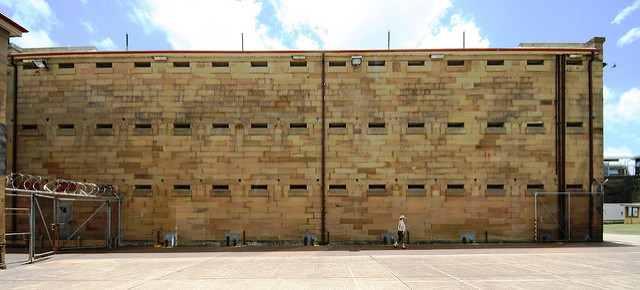

Australia is the sixth largest nation in the world. It is an island continent between the Indian and Pacific oceans. In 1788, it was illegally occupied by British settler-colonialists. These included prisoners who were exempted from the death penalty because they agreed to be “transported” there, as part of a ruling-class plan to colonize the continent “for England.”
The British colonists in power instituted a white-supremacist government to dominate and control the original Aboriginal inhabitants while seizing their land.
But as Jenny Munro, Wiradjuri nation, has stated: “[A]s from time immemorial, we believe as Aboriginal people, Australia has been here from the first sunrise, our people have been here along with the continent, with the first sunrise. We know our land was given to us by Baiami; we have a sacred duty to protect that land.” (aboriginalheritage.org/history)
The Aboriginal Heritage Office states: “It would not be an exaggeration to claim that the island continent was owned by over 400 different [Aboriginal] nations” before the first British arrived.
Before and after 1901, when Australia gained independence from England, additional British and Irish settlers increased the white population and now form the majority population.
Aboriginal people are estimated to be only about 3 percent of the population now, yet they make up 27 percent of the prison population. According to Australia’s Justice Project, their racialized incarceration rate is 13 times that of the white prison population. (tinyurl.com/ybdq7g6z)
Australia’s 2017 Bureau of Statistics revealed an increase in the total prison population during the past 10 years. The largest increases were of Aboriginal men and women. Thirty-three percent of those incarcerated were “on remand,” charged without bail and yet not found guilty.
Aboriginal people also have higher arrest rates than whites, more convictions and a greater likelihood of imprisonment. Non-Indigenous prisoner rates have not increased since 2008.
Structural disadvantages play major roles in overpopulation in prisons. Poverty, overpolicing of the mental and cognitively disabled, institutional discrimination and greater severity by the criminal justice system in the treatment of Aboriginal offenders are contributing factors. Racial disparities continue to exist.
The Australian Indigenous have experienced dispossession, exclusion from education and employment, and displacement. Only about 10 percent of Aborigines speak their native language. Only 59 percent of Indigenous youth ages 15-18 attend school, with just 34 percent graduating. And just 8.5 percent attend universities. Aboriginal home ownership is approximately 39 percent, and average income is only two-thirds that of non-Indigenous people.
Parallels in racism
Parallels exist between the actions of white Europeans and European-descended Americans when it comes to the treatment of people of color worldwide. The U.S. was colonized in the 1600s by European settlers, resulting in the massacre, destruction of property and wholesale displacement of Indigenous people who had inhabited the land for thousands of years. Today, Native peoples comprise only about 2 percent of the U.S. population.
The U.S. has only 5 percent of the world’s population, yet jails 25 percent of the world’s total prisoner population. Similar to Australia, racial disparities dominate in the U.S. African Americans comprise approximately 14 percent of the U.S. population, yet 34 percent of prisoners are African-American men, women and children. Black men are incarcerated at nearly 6 times the rate of white men. And their prison sentences are 19 percent longer.
For centuries, both the state structures of the U.S. and Australia have been committed to an ideology of white-supremacist dominance and privilege. This includes domestic terrorism against people of color, unequal treatment and failure of opportunity — with never a level playing field for “the other.”
Both countries’ economic, political and social systems and institutions are deeply imbedded in racist policies and laws. The majority white population, including those in the working class, benefits materially from the subjugation and oppression of people of color.
State structures and entities created by people of European descent have waged war on people of color in the U.S. and elsewhere, destroying Indigenous cultures and languages, stealing land and resources, and murdering the people. The U.S. appropriation of Hawaii, Alaska and Puerto Rico in the last century is a dramatic example, as are ongoing U.S. aggressions in South America and Africa.
The practice of European and European-American capitalism and imperialism, militaristic invasions, settler-colonialism, white supremacy and dehumanization of people of color continues through brutal attempts to put these systems in place globally.
Centuries of leadership in resistance by people of color and Indigenous peoples — including the Aboriginal peoples of Australia — sends a message to the rest of the world to join with them in ending these systems of oppression.
(PHOTO: OZinOH)
It has become so increasingly clear that Israel is intentionally starving the nearly 2 million…
New York City The Brooklyn Navy Yard is a manufacturing complex that is heavily involved…
The following remarks were delivered at the People’s Summit on Korea in New York City…
Raposo is a Portuguese Marxist analyst, editor of the web magazine jornalmudardevida.net, where this article…
By Alireza Salehi The following commentary first appeared on the Iranian-based Press TV at tinyurl.com/53hdhskk.…
This is Part Two of a series based on a talk given at a national…